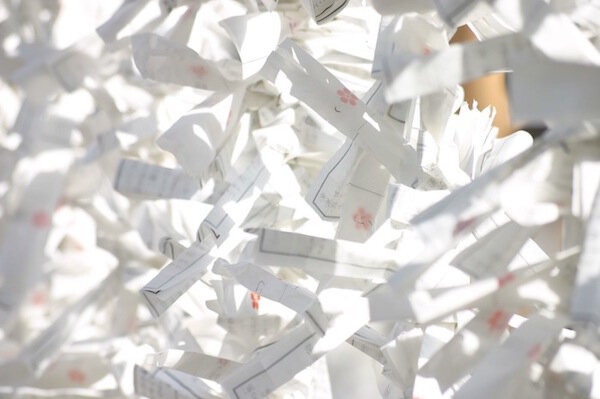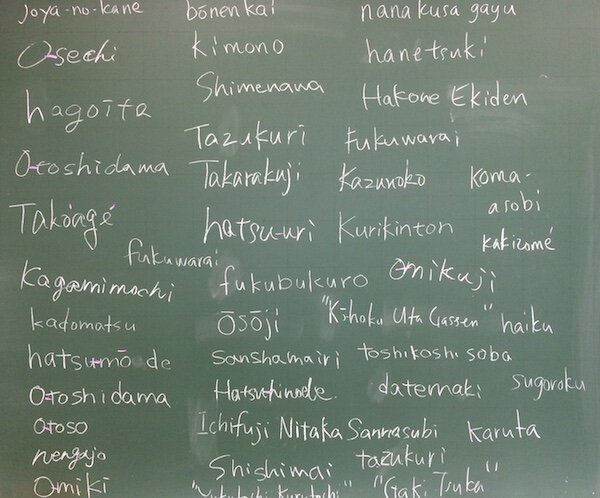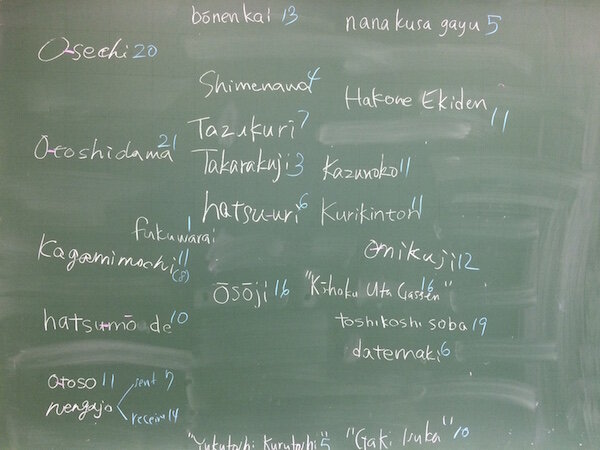In recent years, I have been doing the following activity on the first class after the winter break.
I split the class up into teams and, while listening to traditional Japanese music featuring the koto or shamisen, I have the students write on the blackboard as many words as they can in rōmaji related to the Japanese New Year.
In addition to being kind of fun—not barrels of fun, mind you, but fun enough—this activity can be rather instructive.
For starters, you'll find that many Japanese students, not being proficient in the Hepburn romanization, will write things such as fukubukuro with an "h" rather than an "f" (hukubukuro) or nengajō with a "y" (nengajyo). The reason for this is that many Japanese learn simpler forms of romanization known as kunrei-shiki or Nihon-shiki. For more on this, go here. This is a good chance to briefly re-introduce the students to the Hepburn romanization and encourage them to use it in the future.
A few years back, my second-year English Communication majors came up with the following words:
One of the interesting things about this is that while many Japanese students will offer up words like hagoita, a decorative paddle used when playing a game resembling badminton called hanetsuki or even tako-agé (kite-flying), you shouldn't expect to see any of your neighbors playing hanetsuki or flying kites on New Year's Day. (In all my years in Japan, I have never once seen young women in kimono playing this game live as I have in television dramas.)
I then tell the students to ask one another if they had done any of the things on the board.
"Did you eat o-sechi or nana-kusa gayu?"
"Did you decorate your homes with shimenawa and kadomatsu?"
"Did you send any nengajō?"
Of the 23 students who attended that day, twenty had eaten o-sechi, four had a shimenawa at the entrance of their homes, six had gone to the hatsu-uri New Year's sales, eleven had drunk o-toso, and so on.
Erasing those items which few or none of the students had partaken of, we came up with the following significantly pared down list:
Where New Year's in Japan was once a very colorful, tradition-laden event, all that remains of it today, or so it seems, is the food, the shopping, and banal TV programs. Less than half of the students visited one Shintō shrine (hatsumōde), let alone three, during the holiday. It's kind of sad when you think about it.
Now, I'm not suggesting that we need to put the Shintō back in the Shinnen (New Year), like some good Christians back home demand Christ be kept in that pagan celebration of the winter solstice also known as Christmas. But, I find it odd that the Japanese are so lackadaisical when it comes to their own heritage and culture.




